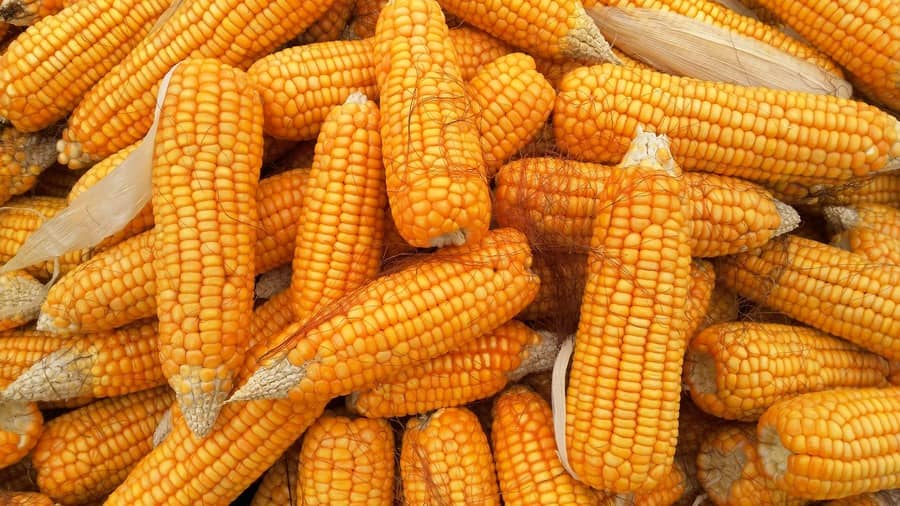Porto Alegre, April 12, 2022 – The high demand in the ethanol segment and good weekly exports suggested to the market a cut in corn stocks for this April supply and demand report. However, USDA maintained stocks by shifting domestic demand in the United States and frustrated the market about a new bullish move. Import cuts in China, higher corn stocks in Europe, and an increase in US wheat stocks sounded a negative sign for prices. However, the Ukrainian crisis continues to claim victims as the West imposes more sanctions on Russia. The war still puts random variables for wheat with effects on corn. However, the biggest point of attention now is the beginning of planting in the United States.
The war continues in Ukraine and the consequent variations of this situation remain unpredictable. Corn planting in Ukraine should start in the second half of April, and the expectation is for at least a 30% cut in the area to be planted. This could take away 10 to 15 mln tons of supply from local production. USDA cut exports for the current business year, 21/22, and raised Ukrainian stocks. In theory, exports lost strength due to the blockade of ports, and corn would still be in internal warehouses awaiting flow. But it is still very premature to say how the war will end, how much availability remains, and how this local 2022 crop will be planted.
It seems that in any situation the world trade will try to replace Ukraine’s risk in the supply of corn. Finding the same supply in other sources and removing some dependence on Ukrainian supply seems to be a normal trajectory, at least until the local situation settles down. Thus, the USDA April report brought some surprises for supply and demand. The first is having increased US wheat stocks and not having cut Russia’s export projection. This confirms what has been pointed out in recent weeks, that is, Russia continues to export despite sanctions, and US exports are not growing at levels that compromise local stocks. Wheat, however, rose again last week in the face of increased sanctions imposed on Russia and the escalation of the war. Definitely, the war component will still remain in the wheat market environment.
The surprises coming from the supply and demand report, however, represented figures that the market had not expected. At first, a picture of Europe where USDA did not show a cut in stocks and/or a tragic supply situation with the absence of Ukraine exports. In fact, there was an increase in European corn stocks, signaling that perhaps the pressure on supply until the summer crop starts in the second half of the year is not as extreme as expected, not least due to some moderation in demand.
Then, these demand data were one of the factors pointed out by USDA to reduce Chinese corn imports in this business year. There was a cut in demand from 194 to 191 mln tons and a proportional cut in imports from 26 to 23 mln tons, in a week when China resumed purchases of US corn with 1 mln tons. In any case, the April report can be considered bearish given the context of this business year.
This adjustment in China allowed USDA to be less optimistic about additional growth in exports and domestic demand in the United States. If China will import less, the increasing volumes of exports in recent weeks are already serving other markets. Small readjustments in the US domestic demand neutralized the effect of growing ethanol demand for the corn market. Thus, the final stock is still projected at 36.6 mln tons, fully sufficient to meet US demand until the arrival of the 2022 crop in September.
All the focus will be on the 2022 crop development for corn prices in the coming few weeks. Planting has started in Texas, as it does every year in this region. However, in the Midwest, the percentages must start to appear from the next 20th, pointing to planting within a good window. Undoubtedly, there is attention to the west side of the Midwest, a region that has coped with a low reserve of soil moisture since 2020. Even so, the 2021 yield set record levels.
So, you should be very careful about totally tragic visions for the US climate this year. There is no doubt that a sharp loss of production this year would be tragic for the demand that would have to be rationed, and the agent of this rationing would be record corn prices. Planting in the Midwest usually does not suffer so much interference with situations of little rain in May, that is, the not too moist climate is favorable for a good planting rhythm. Forecasts for the next two weeks point to above-normal rains in much of the Midwest and normal in the west of the region. Thus, it seems that the planting will advance within a good window for the 2022 US crop.
At the same time, La Nina continues despite some moderation in March. NOAA continues indicating the phenomenon until at least November. If maintained, the west of the United States could really have another dry summer. However, it is not yet possible to assess that the Midwest will have a hot and dry summer to the point of causing production losses in 2022. Some climate models begin to place the summer in the Midwest as hotter and drier, particularly in July and August. Whether this could be enough to bring production losses to the US this year is an indicator that we will only be able to say later on, but it will be the central point for the continuation of high international corn prices or a strong decline. The discreet corn area forecast for this year is a point that aggravates tensions about the local crop.
Agência SAFRAS Latam
Copyright 2022 – Grupo CMA

